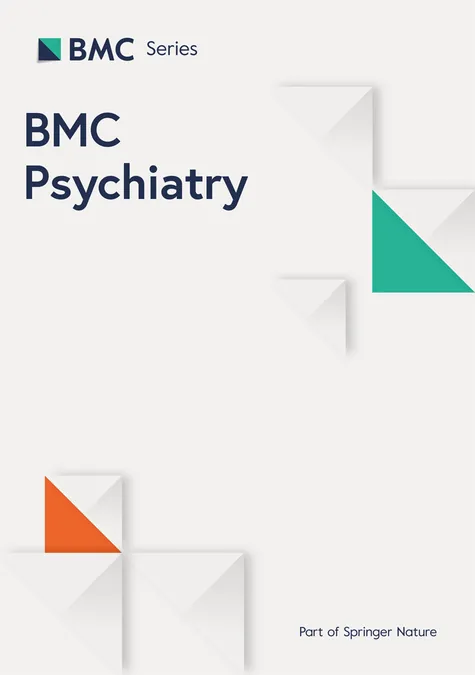
Uncovering the Alarming Vulnerability of Borderline Personality Disorder Patients During the COVID-19 Pandemic: A Retrospective Analysis
2024-12-27
Author: Wei Ling
Recent research conducted during the two initial waves of the COVID-19 pandemic in Berlin has illuminated a concerning trend: patients diagnosed with Borderline Personality Disorder (BPD) exhibited a staggering 3.4 times increased risk of presenting for psychiatric emergency department (pED) intervention following a suicide attempt (SA) compared to other psychiatric groups. This alarming statistic underpins the acute vulnerability of individuals with BPD during this unprecedented global health crisis.
Interestingly, the pandemic's first wave alone correlated with a 3.1 times heightened risk for pED presentations across all diagnostic groups, revealing a broader impact of the COVID-19 era on mental health. However, some groups, particularly those with schizophrenia and psychotic disorders, appeared to have a decreased risk of pED presentations during this time, highlighting a complex interplay of factors influencing various psychiatric conditions.
A deep dive into the data suggests that the specific vulnerability observed in BPD patients was particularly pronounced during the second wave of the pandemic, where the relative risk was found to skyrocket to an alarming 7.1. This indicates that the pandemic’s emotional toll was particularly amplified in this group, prompting urgent discussions on how isolation measures might be exacerbating symptoms typical of BPD, such as fears of abandonment and chronic feelings of emptiness.
Social distancing measures, a fundamental response to the pandemic, reduced physical interpersonal contact, which may conflict with the inherent needs of BPD patients for emotional support. This lack of connection likely intensified their struggles with loneliness and contributed to elevated levels of dysfunctional coping behaviors, including increased substance abuse and self-harm, which have been reported in qualitative studies of this population.
Notably, chronic feelings of emptiness—a hallmark of BPD as outlined in diagnostic criteria—could have been worsened by prolonged social isolation resulting from governmental mandates, putting these individuals at an increased risk of suicidal ideation and attempts. Factors such as decreased social support also contributed to this dangerous trend, as impulsivity, often seen in BPD, may have been less moderated without external encouragement or care.
Previous studies corroborate these findings, with evidence from Canada suggesting a surge in hospital admissions for personality disorders throughout the pandemic, underlining the critical need for enhanced support structures for these vulnerable groups. Conversely, some research, such as from Norway, reported no significant changes in suicide attempts among personality disorder patients but highlighted rising anxiety and depression levels, further underscoring the varied impacts the pandemic had on mental health.
While this study in Berlin offers significant insights, the complexity of patient experiences throughout the pandemic requires additional research to draw more definitive conclusions. Therefore, future studies should focus on connecting feelings of emptiness and social isolation in BPD, as well as explore the long-term consequences of the pandemic on mental health, especially for vulnerable groups.
In conclusion, this discourse highlights the urgent need for increased awareness and tailored intervention strategies for patients with Borderline Personality Disorder, particularly in times of societal crises. As the world continues to grapple with the aftermath of the pandemic, it is clear that mental health services must evolve to meet the heightened needs of at-risk populations. The conversation surrounding BPD and its complexities must be prioritized to ensure that the vulnerabilities of these individuals do not become lost amid the chaos of competing health crises.
**Don't Miss Out:** Stay tuned for upcoming studies that delve deeper into the long-term effects of the pandemic on mental health and what it means for the future of psychiatric care!



 Brasil (PT)
Brasil (PT)
 Canada (EN)
Canada (EN)
 Chile (ES)
Chile (ES)
 Česko (CS)
Česko (CS)
 대한민국 (KO)
대한민국 (KO)
 España (ES)
España (ES)
 France (FR)
France (FR)
 Hong Kong (EN)
Hong Kong (EN)
 Italia (IT)
Italia (IT)
 日本 (JA)
日本 (JA)
 Magyarország (HU)
Magyarország (HU)
 Norge (NO)
Norge (NO)
 Polska (PL)
Polska (PL)
 Schweiz (DE)
Schweiz (DE)
 Singapore (EN)
Singapore (EN)
 Sverige (SV)
Sverige (SV)
 Suomi (FI)
Suomi (FI)
 Türkiye (TR)
Türkiye (TR)
 الإمارات العربية المتحدة (AR)
الإمارات العربية المتحدة (AR)